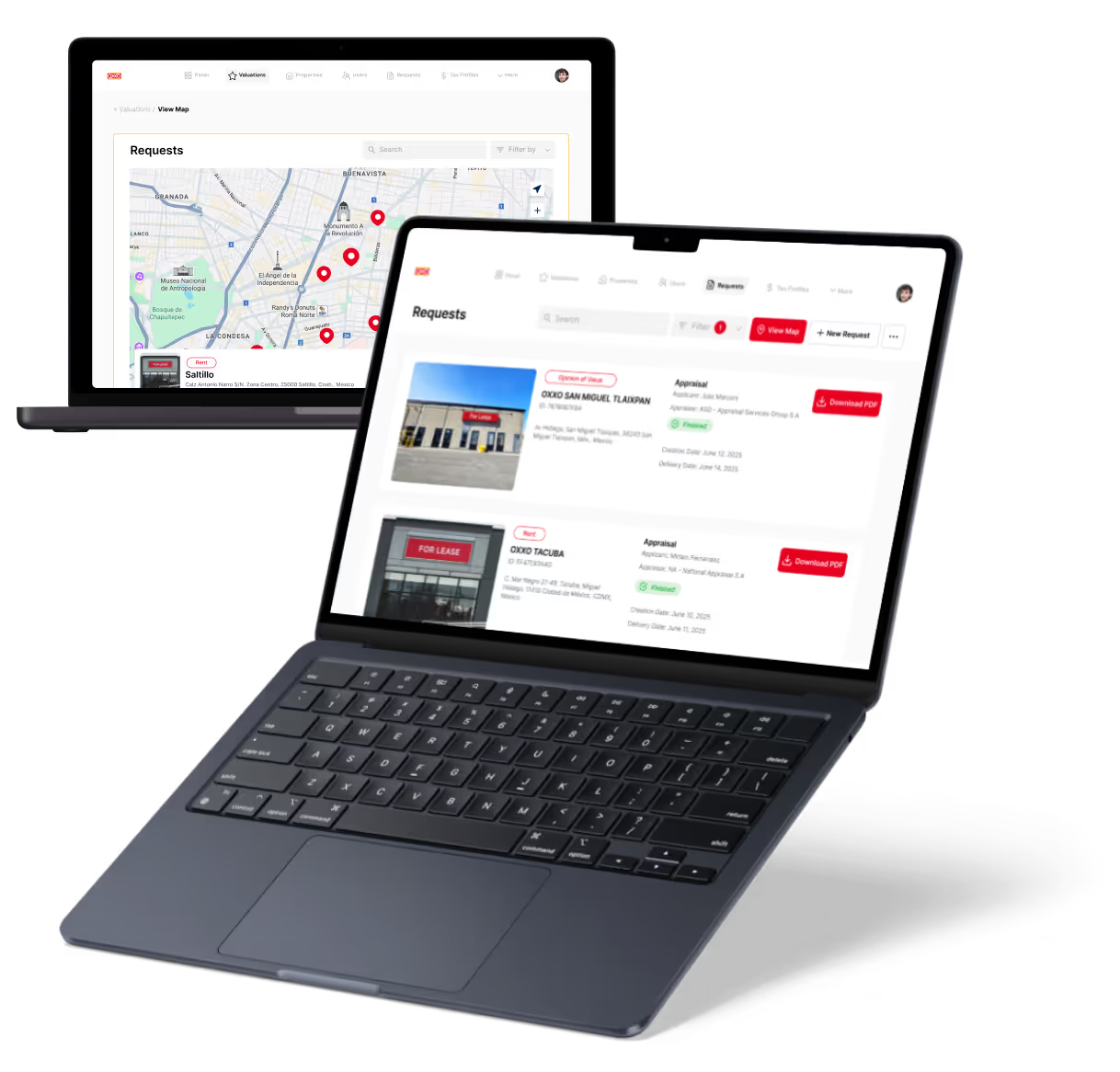Airtable vs Basecamp | 12 Factors to Decide the Best One
9 min
read
Compare Airtable vs Basecamp on automation, collaboration, views, and team size. Find the best tool for data workflows or project communication

Airtable helps teams manage structured data, link records, and automate workflows—all in a flexible, spreadsheet-like interface. It's ideal for content planning, CRM tracking, or project dashboards.
Basecamp, on the other hand, is a team communication and project management platform. It focuses on clarity and collaboration with to-do lists, chat, message boards, and schedules.
If your team needs task updates and communication in one place, Basecamp is a great fit. If your priority is managing complex data or linking workflows, Airtable stands out. This guide compares both tools side by side so you can choose the one that best fits your needs.
Quick Comparison Table - Airtable vs Basecamp
1. What’s the core difference between Airtable vs Basecamp?
The core difference between Airtable and Basecamp is data organization vs project communication.
Airtable is a no-code database tool that helps teams manage structured data with customizable views like grids, calendars, and Kanban boards. It’s ideal for content planning, CRMs, and internal tracking systems. Airtable combines spreadsheets with database logic, giving you control over how you view, link, and automate your data.
Basecamp, on the other hand, is a project management and team collaboration tool. It focuses on communication with message boards, to-dos, schedules, file sharing, and real-time chat. It’s built to reduce meetings and centralize team discussions.
If you need to manage tasks and talk to your team, Basecamp is great. If you need to track, filter, and automate structured data, Airtable is a better fit. Your choice depends on whether your priority is managing data or managing communication.
2. Ease of Use
Let’s begin by comparing how easy it is to get started with each tool.
Is Airtable easy for non-technical users to get started with?
Yes. Airtable is very beginner-friendly. Its spreadsheet-like layout is familiar, and you can build custom databases without any coding. With pre-made templates and drag-and-drop views, you can get started quickly.
Non-technical users can set up tables, link data, and automate tasks using its visual editor. It’s easy to learn and use for content tracking, project planning, or CRM-style work. Airtable also includes a simple Interface Designer, making it easy to build dashboards for team input or reporting.
How beginner-friendly is Basecamp for small teams and clients?
Basecamp is designed for simplicity and team communication. It uses a clean layout with tools like message boards, to-dos, group chat, and schedules all in one place. It’s very easy for non-technical users to jump in, especially small teams and clients.
Each project has the same layout, so once you learn it, it’s the same across all workspaces. There’s no setup complexity—just invite your team, assign tasks, and start talking. It’s ideal for users who don’t want to manage software, just get work done.
Read more about:
3. Views and Data Handling
Now let’s explore how both tools handle data and project organization.
What types of views and layouts does Airtable offer?
Airtable offers a range of views to help you manage and visualize your data. These include Grid (spreadsheet), Calendar, Kanban, Gallery, Timeline, and Form views. You can group, sort, and filter records however you like.
Each view can be customized based on user needs, making Airtable great for tracking tasks, content, or clients. It also supports linked records, so you can connect tables like a real database. This flexibility makes Airtable perfect for workflows that depend on structured data.
How does Basecamp handle tasks, files, and project boards?
Basecamp simplifies projects using a fixed layout: each project has tools like To-Dos, Docs & Files, Schedules, Message Boards, and Campfire (chat). You can assign tasks, upload documents, leave comments, and set due dates.
However, it lacks custom views like Kanban or Calendar filtering beyond basic scheduling. Everything stays organized inside each project, but there’s no way to sort or filter across projects unless you use third-party tools. It’s focused more on communication and clarity than data structuring.
4. Workflow Automation
Next, let’s see what both tools offer to automate repetitive tasks.
What automation tools are built into Airtable?
Airtable includes a built-in automation editor that triggers actions based on record changes. You can send emails, update fields, post to Slack, or trigger webhooks when conditions are met. Airtable also supports custom JavaScript for more advanced automation.
You can connect Airtable to tools like Zapier and Make to build more complex, multi-step workflows. These features make Airtable useful for automating repetitive tasks, approvals, reminders, and syncing data across apps.
Does Basecamp support automation for task updates and workflows?
Basecamp does not offer native workflow automation like Airtable. You can set task due dates, assign responsibilities, and send notifications, but it lacks built-in triggers or conditional workflows. If you want automation, you’ll need third-party tools like Zapier or custom scripts through the Basecamp API.
For teams that rely on advanced automation or approval flows, Basecamp may feel limiting. It’s better suited for manual coordination and check-ins rather than process automation.
5. Collaboration Features
Let’s compare how each platform helps teams work together in real time.
How does Airtable handle real-time collaboration and comments?
Airtable supports real-time editing by multiple users on the same base. You can leave comments on records, mention teammates with @tags, and view edit history to track changes. Collaborators can also interact with custom dashboards via the Interface Designer.
While it lacks a built-in chat feature, its commenting and update features make teamwork smooth. Airtable is ideal for teams managing shared data and workflows that require feedback, notes, and quick updates on records.
What collaboration tools are included in Basecamp (chat, check-ins, etc.)?
Basecamp is built for communication. It includes group chat (Campfire), message boards, automatic check-in questions, direct messaging, and team notifications. These tools keep everyone in the loop without needing extra apps like Slack or email.
You can comment on tasks, share files, and run discussions inside projects. Each person sees just what they need, helping reduce noise. For teams focused on conversations and planning, Basecamp’s communication tools are a major strength.
Read more about:
6. Reporting and Dashboards
Now let’s explore how both platforms help you understand project progress and data.
What reporting and dashboard options are available in Airtable?
Airtable includes dashboard-like features through its Interface Designer, which lets you build visual layouts with charts, summaries, buttons, and filtered views. You can track KPIs, display data summaries, or create input forms for collaborators.
It also supports third-party tools like Chart, Page Designer, and integrations with Google Data Studio or Tableau for deeper analytics. While it’s not a traditional reporting tool, Airtable gives teams flexible ways to visualize their own data and monitor progress based on custom logic.
Does Basecamp provide any visual reporting or project summaries?
Basecamp is not designed for visual reporting. It provides simple overviews like the “What’s on my plate” view, project progress timelines, and task lists grouped by due dates or people. You can track what’s assigned and what’s overdue, but there are no built-in charts, dashboards, or KPIs.
For detailed reporting, you’d need third-party integrations. Basecamp focuses more on transparency and conversations than visual metrics or structured reporting.
7. Scalability and Team Size
Let’s see how each platform handles different team sizes and workloads.
Is Airtable suitable for growing teams and complex projects?
Yes. Airtable can scale with your team, especially if you're managing structured data. Its Enterprise plan supports advanced permissions, unlimited workspaces, and up to 250,000 records per base. You can create multiple tables, link them together, and build interfaces for different departments.
However, performance may drop slightly with very large bases or too many linked records. Still, for most use cases—project tracking, CRM, operations—it works well for both small teams and large organizations.
How well does Basecamp work for small or large teams?
Basecamp is excellent for small to mid-sized teams that value communication and project visibility. It keeps teams aligned with built-in tools like chat, to-dos, and check-ins. Larger teams can use it, but it lacks enterprise-level user roles, reporting, and permissions.
All projects follow the same structure, so it stays simple—but that also limits flexibility as your needs grow. It works best when you have fewer stakeholders and want to centralize teamwork without managing complex systems.
8. Integrations
Next, let’s compare how both platforms connect to other tools.
What tools can Airtable integrate with for automation and workflows?
Airtable integrates with Zapier, Make, Slack, Google Calendar, Jira, and other common tools. It has a well-documented REST API, making it easy to connect with custom apps or services. You can also use webhooks, extensions (formerly called blocks), and scripting for advanced use cases.
Airtable’s automation features work well with external services, making it great for syncing workflows across your favorite platforms like Gmail, Dropbox, or Trello.
What integrations does Basecamp support for project syncing?
Basecamp offers limited direct integrations. It has a public API and connects to some third-party platforms like Zapier, TimeCamp, or Toggl for time tracking and syncing tasks. However, it doesn’t have a large built-in app marketplace or native app integrations.
If you want to extend Basecamp’s functionality, you’ll need external automation tools. For teams focused on communication without complex tool stacks, this is fine—but it may be limiting for automation-heavy setups.
9. Mobile and Performance
Now let’s look at how well these tools perform on mobile and with large data sets.
How does Airtable perform on mobile and with large datasets?
Airtable has mobile apps for iOS and Android, allowing you to view, edit, and add records. It’s great for quick updates and light use but not ideal for building or customizing bases on mobile.
Performance on large datasets depends on plan limits—once you reach thousands of records with many linked tables, speed may drop. Airtable works best for moderate use on mobile, but real editing or structuring is easier on desktop.
What is the mobile experience like in Basecamp?
Basecamp has a well-optimized mobile app that mirrors the desktop version closely. You can view projects, join chats, reply to message boards, complete to-dos, and get notifications. It’s designed for real-time communication, so it works smoothly even when switching between tools.
Mobile users can stay connected to updates, answer questions, and check deadlines without needing a laptop. Basecamp’s mobile experience is stronger than Airtable’s for team communication and fast project updates.
Read more about:
10. Support and Community
Let’s compare how each platform helps you learn and troubleshoot.
What kind of customer support and community help does Airtable offer?
Airtable provides email support, an extensive Help Center, and an active community forum where users share tips and ask questions. Paid plans offer faster support response times, while Enterprise users get dedicated onboarding and success managers.
Airtable also offers video tutorials, webinars, and in-product guides. For developers, there’s a full API reference. The support ecosystem is strong and helpful for both non-technical and technical users building structured workflows and apps.
What support options are available for Basecamp users?
Basecamp offers email support and detailed help documentation, but no live chat or phone support. Its support team is known for being friendly and responsive during business hours. There's also a searchable knowledge base and blog with tips for getting the most out of Basecamp.
While it doesn’t offer onboarding services or priority support tiers, its simplicity means users rarely need complex help. The platform is designed to work out of the box, with minimal need for tech support.
11. Security and Compliance
Finally, let’s see how both tools protect your data.
What security standards does Airtable follow for enterprise teams?
Airtable meets SOC 2 Type II standards and supports SSO, 2FA, and admin permissions. It provides audit logs, field-level access control, and workspace-based user roles. Data is encrypted in transit and at rest.
Airtable also offers Enterprise controls like domain-restricted sharing and activity logging. While it doesn’t advertise HIPAA or GDPR certifications directly, its security is solid for most business and team use cases.
How does Basecamp handle data protection and compliance?
Basecamp prioritizes privacy and follows strong security practices. It uses TLS encryption, password hashing, and secure AWS infrastructure. It complies with GDPR, and the company emphasizes ethical data practices, collecting minimal user information.
However, it doesn’t support features like SSO, audit logs, or field-level access. Basecamp is great for teams who trust a simple, secure setup—but it may fall short for companies needing stricter enterprise-level controls or compliance frameworks.
Read more about:
12. Final Verdict
Let’s wrap up with when each tool makes the most sense.
When should you choose Airtable over Basecamp?
Choose Airtable if your main need is to organize structured data, manage workflows, and build internal tools with flexible views and automation. It’s ideal for content teams, marketers, product managers, and operations teams who want control over how data is tracked, connected, and reported. Airtable offers more powerful customization for growing teams who need logic and data linking.
When is Basecamp a smarter choice than Airtable?
Choose Basecamp if your top priority is team communication, task coordination, and simplicity. It’s built for small to mid-sized teams who need message boards, to-dos, file sharing, and group chat in one place. If you don’t need automation, dashboards, or complex structures, Basecamp is easier to manage and helps keep everyone on the same page without friction or tech overhead.
Created on
July 4, 2025
. Last updated on
December 11, 2025
.

FAQs
Can Airtable replace Basecamp for project management?
Is Basecamp better for non-technical users?
Which tool is better for managing structured data?
Can I use Airtable and Basecamp together?
Does Basecamp support file storage and sharing?
Which one scales better for large organizations?







%20(Custom).avif)








